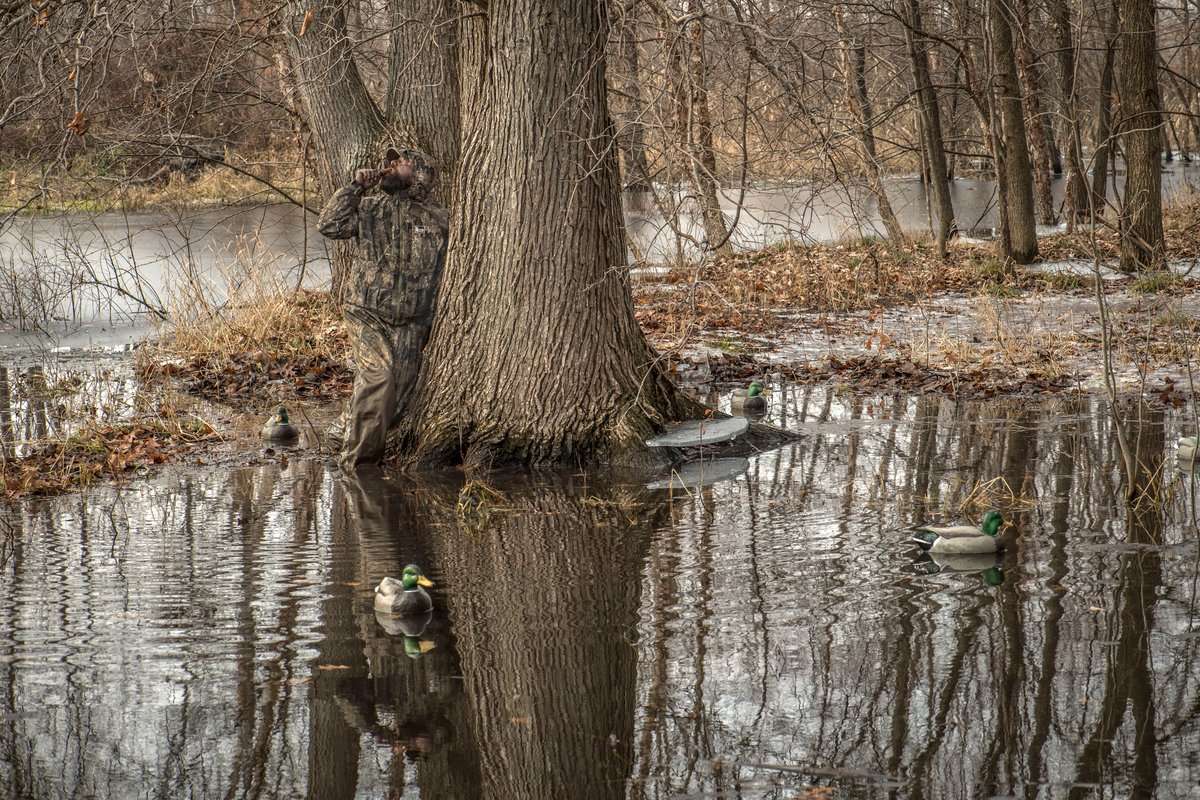Warm temperatures and varying water conditions challenge hunters
Date: Jan. 9
Location: Middle and southern portions of the flyway
Major Weather Trends
Heavy rains recently hit parts of the Deep South, and warmer-than-normal temperatures have dominated the entire flyway, making waterfowl hunting tough at times.
"It's pretty mild here right now," said Luke Naylor, waterfowl program coordinator with the Arkansas Game and Fish Commission. "Overall, a fair bit of the area has really gone quite a while without any rain or any new habitat on the landscape. It's just kind of a stable pattern. We've been around 60 degrees here for several days, so there are no ducks out looking for new resources. They're not really stressed out and taking risks to go find food somewhere else.
"It's just tough to hunt ducks and have consistent success when it's 60 degrees and there aren't a lot of new resources for ducks to be searching for."
Hunters farther south have enjoyed enough clear days with decent winds to provide intermittently good action.
The weather has been pretty blah, but on the days you get sun and wind, the ducks just flat-out act right, said Louisiana hunter Justin Martin, general manager of Duck Commander.
Water/Habitat Conditions
Much of the Deep South received several inches of precipitation the first week of January, making water levels rise and spreading ducks across the landscape. However, Naylor said many parts of Arkansas — including the Arkansas River Valley, and central and southern Delta regions — were relatively dry.
It quietly became a really dry December," he said. "I'd say habitat availability overall is below average.

Species and Numbers
Reports across the mid- and deep South varied by region and even the day. The most recent Arkansas survey report said the most recent Delta mallard population estimate was 447,083, which was lower than the long-term (2009 through 2019) average of about 650,000. Likewise, the overall duck estimate was about 898,656, also lower than the long-term average of more than 1.2 million.
Typically, (early January is) when we have the highest percentage of mallards during the midwinter survey," Naylor said. "And we're seeing lots of pintails and shovelers, which typically means south winds, warm weather and the beginning of the spring migration."
Still, Naylor believes many Arkansas hunters are finding fairly consistent success.
"Maybe that's in large part due to a direct comparison to last year, which was especially tough for a lot of people," he said. "Maybe this year, by comparison, is just sufficiently better that we're not hearing a lot of negative comments about the season. I imagine hunters who have a decent complex of habitat to hunt and are managing hunting pressure are probably doing all right."
Avid hunter and longtime Realtree.com waterfowl contributor James Buice painted a different picture of action in the Delta.
It's been slower than normal — significantly slower in December — than in years past, he said. Lots of stale ducks. I did not hunt until around mid-December due to low numbers of ducks on the farm. They are in pockets, but the reports of big numbers are either isolated to a magical right place or right time, and on the X, or they're killing shovelers. That said, we killed several greenheads, a few pintails and plenty of specks during two days, but we were hunting holes that had not been shot all season.
Martin said duck numbers in his area weren't great, but hunting had been better than in 2018-'19.
Bird numbers I would say are below average, but the ducks are working pretty well and just now starting to get really paired up, he said. As everyone knows, that makes them a little more difficult to get. We're having to get off of holes in the timber and get closer to the thickets that they prefer for seclusion. Mallards are making up 80 percent of our bag now, with pintails, gads and greenwings filling them out.
Personal Hunting Report
During the first week of January, I took a winter break to join several folks at Honey Brake Lodge near Jonesville, Louisiana. Bird numbers at Honey Brake's sprawling, intensively managed properties were excellent, and cool morning temperatures promised great action. Light winds and finicky ducks made hunting somewhat difficult in our blind, but we still scratched out respectable bags of pintails and greenwings, with a few gadwall and ringnecks thrown in. We saw loads of ducks, including massive flocks of sprigs, teal and ringers, and even some good groups of mallards. Other blinds experienced fantastic action, taking heavy straps of mallards, ringnecks and pintails. Bottom line? I want to go back — soon.
Boat Ramp Chatter/Upcoming Patterns/Hotspots
Long-range forecasts call for cool mornings and warm afternoons with periods of rain through the rest of duck season. Naylor said he hopes the predicted rains create additional habitat in Arkansas. However, he's also wishing for cold weather, which would improve hunting.
"Hopefully, this will bring some sort of change that will stir things up a little bit so people who haven't had good luck so far in the season can find success," he said.
With good pockets of birds in some spots, other hunters remained optimistic about the season's final few weeks.
I hope it finishes strong and we start to see the teal coming back from the south, heading back home, but who knows? Martin said.
Click here for more Realtree waterfowl hunting content. And check us out on Facebook.







